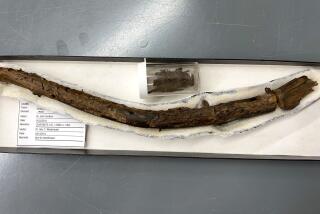Ice cream bean tree: Sweetness by the scoop
When it comes to drought-tolerant, fast-growing shade trees, few are as useful as the ice cream bean tree, Inga edulis (and its 300-plus related species). Although it grows like a tree, the ice cream bean actually is a legume. It can grow 60 feet or longer, and after four years in the ground it starts putting out foot-long pods packed with lima bean-size seeds swaddled in an edible, sweet, cottony covering.
“When we went hunting in [El] Salvador and we are thirsty, we eat it,” said Manuel Cisneros, the agricultural project coordinator at the Growing Experience, an urban farm at the Carmelitos housing development in Long Beach. “In Salvador they don’t grow at sea level, but here they do. It grows so easily. If you throw the seed on the ground, the next year you will see a tree there.”
Ice cream bean plants are native to a large region spanning from Puerto Rico to Mexico to the Amazon, where the pods can reach 3 feet. The plants often grow near rivers and are spread by birds and monkeys that adore the beans encased in the leathery shells.
Coffee and cacao farmers also plant ice cream bean for its canopy of shade and its ability to fix nitrogen in the soil, making it more fertile. Ice cream bean also is used for reforestation projects, valued for rapid growth as well as its tolerance of acidic soils. Thanks to the plant’s broad leaves, weeds rarely get established beneath it.
The tree at Cisneros’ garden is 6 years old and more than 30 feet high. It pumps out pods that go into produce boxes for subscribers of the Growing Experience’s community supported agriculture program, or CSA.
Ice cream bean plants can be propagated from seed easily. Once the pod is opened, the seeds don’t last long -- only a few days unless kept moist, usually in a plastic bag with some soil or peat moss. Frequently the weeds will have already started spouting within the pods. They depend on high humidity to stay viable and should be kept in the shade during germination.
Exotica Rare Fruits in Vista has seedlings that can be traced back to seeds brought back from Oaxaca 30 years ago. You might also stop by the Saturday farmers market at the Growing Experience and see if pods are for sale.
The plant can grow in a container, although you won’t get as many pods. It won’t need any nitrogen fertilizer, but it will benefit from potassium additives, especially if it’s dropping leaves. It can be pruned to be kept low, but be careful of cutting too much. A few branches should be left alone.
The Global Garden, a look at our multicultural city through the lens of its landscapes, appears here on Tuesdays. For an easy way to follow future installments, join our Facebook page for Gardening in the West. Email: [email protected].






